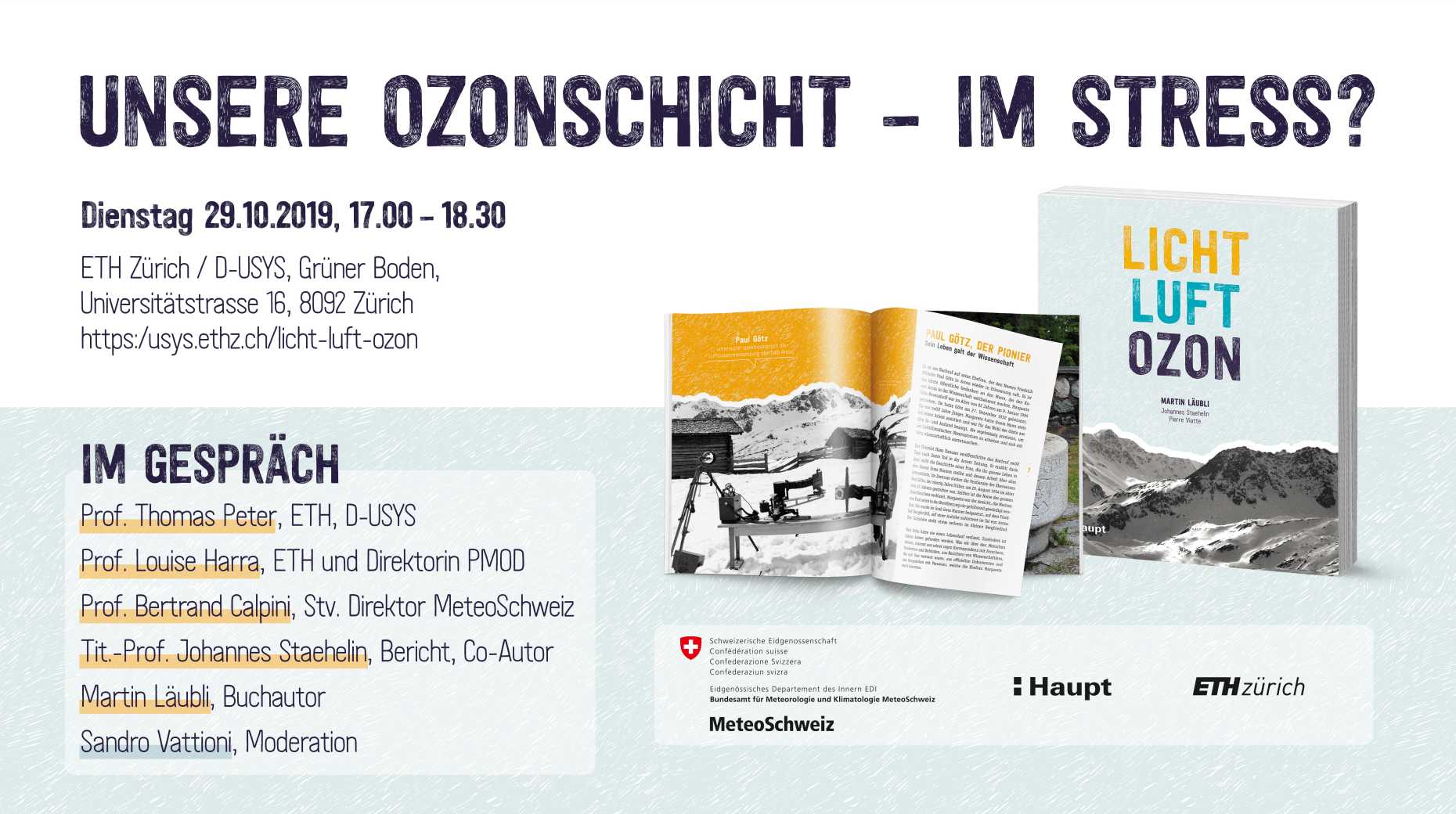Our ozone layer – under stress?
Astrophysics (IPA)
The days when the harmful effects of CFCs made daily headlines have passed. But how is the ozone layer doing today? On Tuesday, 29 October, five experts – among them ETH physics professor Louise Harra – will discuss how much under stress our ozone layer is in times of climate change and the significance of these processes for all of us.
The vital effect of ozone as a filter against hard UV radiation, on which we all depend, is determined by the sum of all ozone molecules within the entire vertical column of air. Measurements of this ozone column have been carried out in Arosa for almost a century, making it the world's longest-running ozone measurement series. Currently, such measurements are also being done in Davos, and from 2021, the measuring devices will move completely to Davos. Then the world-famous measuring station at the Arosa site will close for good, and with it a chapter of the story.
The world's longest ozone measurement series has led science journalist Martin Läubli to explore not only the events surrounding ozone measurements sincethe began, but also the lives and entanglements of the pioneers during this time. In his recently published book "Licht Luft Ozon" ("Light Air Ozone") he impressively describes a piece of research and environmental history.
The pioneers of ozone research and their lives
In the 1920s, the spa and tourist office, and later also the Chur-Arosa railways and the municipality, financed the Lichtklimatische Observatorium (LKO) in Arosa. Through the measurements, the healing power of mountain air was to be scientifically confirmed. Of particular interest was the possibility to heal tuberculosis. Before the invention of antibiotics, the treatment of this serious disease consisted mainly in exposing the patients to sunlight. Therefore, research at that time focused on the biologically effective part of sunlight and air quality. Even after the introduction of antibiotics for the treatment of tuberculosis in the 1940s, the ozone-column measurement in Arosa continued. At a time when satellite measurements were still unknown, ozone measurements were then mainly used to improve weather forecasting. Not until the 1950s, in addition to the ozone column measurement, did a systematic measurement of the ozone distribution as a function of altitude begin.
From the ozone hole to the Montreal Protocol
In the 1970s, CFCs (chlorofluorocarbons) were suspected to release chlorine atoms into the stratosphere, destroying ozone. With the discovery of the ozone hole over the Antarctic in 1985 and the insight that this frightening phenomenon is due to CFCs, the urgency of this problem became clear. In 1987, the Montreal Protocol was signed by 197 countries. It has a binding effect to this day. The signatories to this treaty, including Switzerland, pledged not to use CFCs and other ozone-depleting compounds and to further measure the ozone layer. The reliable Swiss measurements of the ozone column were already very useful for worldwide research in the second half of the 1980s. The continuation of the measurements remains important, as we are now increasingly recognizing the extent of the manifold interactions between the climate system and the ozone layer, which will also be decisive for the future development of the ozone layer. Since the end of the 1980s, the Federal Office of Meteorology and Climatology MeteoSwiss has been responsible for this task.
Panel discussion of experts
Why ozone measurements are important also in times of climate change, knows Thomas Peter, Professor of Atmospheric Chemistry at ETH Zurich. Also on the podium is ETH Professor Louise Harra, a world-renowned solar and astrophysicist. She has recently been appointed Director of the Physical Meteorological Observatory Davos (PMOD) and is responsible for ozone measurements in Davos. Professor Bertrand Calpini is deputy director of the Federal Office of Meteorology and Climatology MeteoSwiss and heads the business unit Measurements and Data. Johannes Staehelin, Professor emeritus of ETH Zurich, is the co-author of the scientific report on the world's longest ozone measurement series and the history of the LKO in Arosa. The science journalist Martin Läubli deals with scientific topics. In his function as a journalist, he observes, among other things, developments related to the Montreal Protocol that are relevant to ozone and the climate. Sandro Vattioni, master student at the Institute of Atmospheric and Climate Sciences (IAC) of ETH Zurich, moderates the expert discussion and also lets the audience have their say.
On behalf of the Department of Environmental Systems Science, the Department of Physics and Meteo Switzerland, we cordially invite you to the book presentation and panel discussion!
Please note that the panel discussion will be in German.
Our ozone layer - under stress?
Book presentation and panel discussion
Tuesday, 29 October 29, 2019. Start at 17:00 h.
ETH Zurich D-USYS, "Grüner Boden", Universitätstrasse 16, 8092 Zurich
The event will be accompanied by an exhibition, which will be open from 25 October to 31 October 2019 during the opening hours of the ETH Zurich (CHN building).
